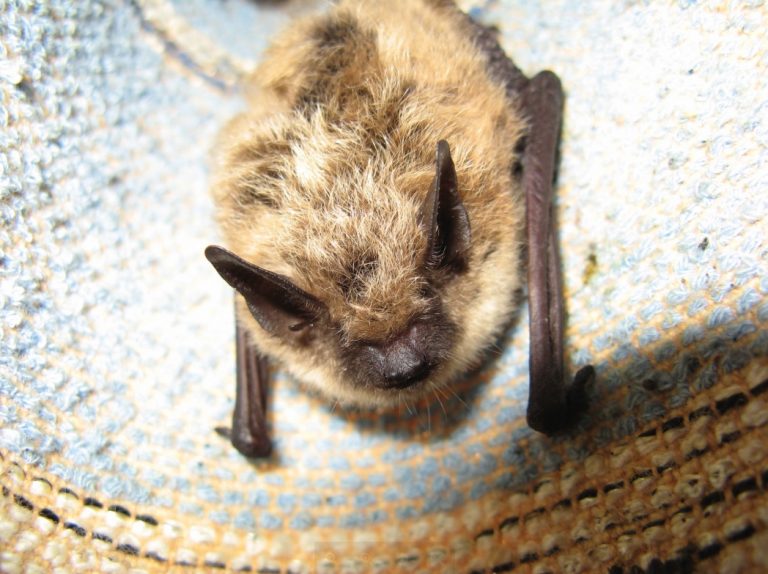Do not panic if a bat enters your home. Do not knock the bat out of the air, and do not attempt to handle or catch the bat. A bat may make sharp turns while flying in an enclosed area and may appear to swoop down at you. The bat is not trying to attack you; it is simply trying to get its bearings so that it can find its way back outside.
A bat that has bitten a person or pet will need to be tested for rabies. Bat bites are small, and someone may not realize that they have been bitten. It is better to err on the side of caution and have the bat tested if there has been potential contact. For example, these would all be cases where the bat should be tested: someone who has been sleeping and wakes up to find a bat in the room, or potential bat contact with infants, young children, or people with dementia or other health issues that may impair their ability to determine possible contact with a bat.
Bats can have rabies. If the bat has bitten (or is suspected of having bitten) a person or a pet, do not allow the bat to escape; keep the bat enclosed in the room. Call the local Department of Animal Control to have an officer capture the bat.
Testing is done on the dead bat’s brain, so it is important not to damage the carcass, especially the head, before testing.
If the bat tests positive for rabies, medical attention is needed. A person who has been bitten will need their doctor to administer the rabies vaccine.
If the bat has not bitten anyone, here are the steps to take:
If you see bats coming and going from the building, there may be a bat colony inside. During the spring and early summer, some species of bat will set up maternity colonies in buildings to raise their pups. During the winter, bats will hibernate together in groups within buildings if natural shelter is unavailable.
If at all possible, let the bat colony remain for the season. If the colony cannot be tolerated, CONTACT an Illinois Department of Natural Resources wildlife biologist on how to deal with the colony.

The Wildlife Illinois website was authorized by the Illinois Department of Natural Resources (IDNR) in partial fulfillment of project W-147-T. The website was developed by the National Great Rivers Research and Education Center, 2wav, and the IDNR in partnership with the United States Department of Agriculture Animal and Plant Health Inspection Service Wildlife Services and University of Illinois Extension to provide research-based information about how to coexist with Illinois wildlife.